
Vamana also known as Trivikrama, Urukrama, Upendra, Dadhivamana, and Balibandhana, is an avatar of the Hindu deity Vishnu. He is the fifth avatar of Vishnu and the first Dashavatara in the Treta Yuga, after Narasimha.

Laxmi Prasad Devkota (1909-1959) was a Nepalese poet, playwright, novelist, and politician. Honored with the title of Mahakabi in Nepali literature, he was known as a poet with a golden heart, and is considered one of the most famous literary figures in Nepal. Some of his popular works include the best-selling Muna Madan, along with Sulochana, Kunjini, Bhikhari, and Shakuntala.

Tihar is a five-day Hindu festival of Diwali celebrated in Nepal and the Indian regions of Sikkim and Gorkhaland, which host a large number of ethnic Indian Gorkhas
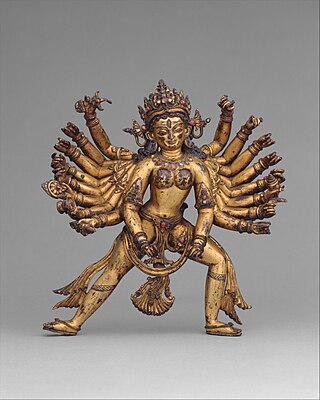
Dashain or Bada'dashain, also referred as Vijaya Dashami in Sanskrit, is a major Hindu religious festival in Nepal and the Indian states of Sikkim, West Bengal, Assam, South India, and Sri Lanka. It is also celebrated by Hindus of Nepal and elsewhere in the world, including among the Lhotshampa of Bhutan and the Burmese Gurkhas of Myanmar. The festival is also referred as Nauratha, derived from the Sanskrit word for the same festival Navaratri which translates to Nine Nights. A version of this festival is celebrated as Navaratri, Navaratri is not exactly the same as Dashain. Most Americans call it Dussehra or Dashera by Hindus in India, although rites and rituals vary significantly.
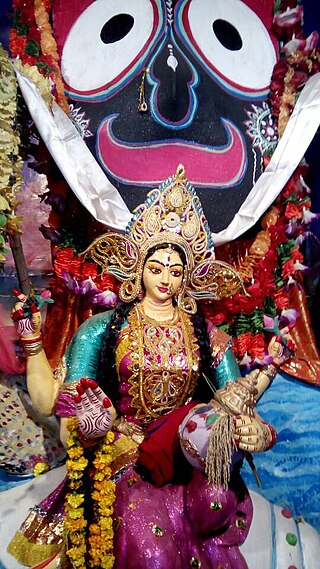
Lakshmi Puja is a Hindu occasion for the veneration of Lakshmi, the goddess of prosperity and the supreme goddess of Vaishnavism. The occasion is celebrated on the amavasya in the Vikram Samvat Hindu calendar month of Ashwayuja or Kartika, on the third day of Deepavali (Tihar) in most part of India and Nepal. In Assam, Bengal, and Odisha, this puja is celebrated five days after Vijaya Dashami.
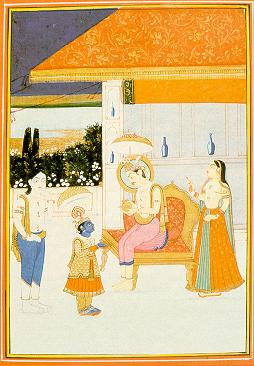
Balipratipada, also called as Bali-Padyami, Padva, Virapratipada or Dyutapratipada, is the fourth day of Diwali, the Hindu festival of lights. It is celebrated in honour of the notional return of the daitya-king Bali (Mahabali) to earth. Balipratipada falls in the Gregorian calendar months of October or November. It is the first day of the Hindu month of Kartika and is the first day of its bright lunar fortnight. In many parts of India such as Gujarat and Rajasthan, it is the regional traditional New Year Day in Vikram Samvat and also called the Bestu Varas or Varsha Pratipada. This is the half amongst the three and a half Muhūrtas in a year.

Kushe Aunsi is a Nepalese Hindu lunar festival of celebrating fatherhood and paternal bonds, equivalent to the Father's Day celebration. The festival falls on the new moon day of the Hindu month of Bhadra. The cow-eared incarnation of lord Shiva— Gokarneswor Mahadev is also worshipped on this day.

Jhijhiya (also called Jhijhari) is a cultural folk dance of Mithila The dance is performed to offer devotion towards goddess Durga—the goddess of victory as well as to protect one's family, children and society from witches and dark magic.
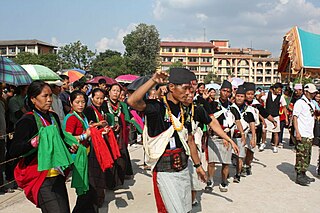
Bhume Naach is one of the festivals celebrated by the Kham Magar people from Lumbini and Karnali provinces of Nepal. The term Bhume means 'Earth' and Naach means 'dance' in the Nepali language. The Kham people practice a religion that worships the land, water sprouts (shim), forests and weather, asking for better crop yields and cattle.

Deuda or Deuda Khel is a Nepali genre of song and dance, performed in the Sudurpashchim and Karnali provinces of Nepal, as well as in the Kumaon Division of Uttarakhand state of India. It is performed on the occasion of various festivals, such as Gaura. The dance is performed by singing Deuda songs in a circulus by holding each-other's hands. It is considered as part of the cultural heritage of Karnali Province.
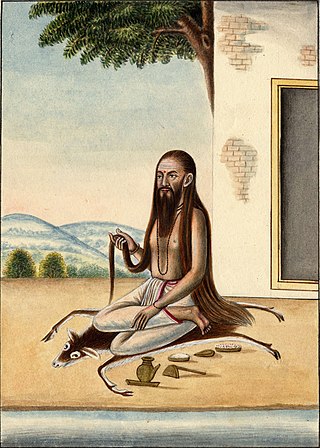
Chaulagain is a surname in Nepal. The people of this surname belongs to Bahun and Chhetri caste. Chaulagain belongs to Bharadvaja gotra. Alternative spellings include Chamlagain, Chaulagai and Chamrel.

Jhuma Limbu is a Nepali singer, folk musician and music researcher. She has been actively researching about various Nepali folk music genres and instruments. She has released multiple albums, including an audio version of Mundhum, the Limbu religious scripture. She trained under Amber Gurung, a famous Nepali musician who composed the Nepali national anthem.

Rajendra Bajgai(Nepali: राजेन्द्र बजगाई) is a Nepalese musician, composer and songwriter of Nepal. He was born in 1988. He was from Baridya Nepal,and has been worked in more than 800 Nepali songs including 'Jala Joban' and 'O Mero Parana'.

Ghatu dance is a Nepalese folk dance of the Gurung Community of western Nepal. The dance is performed mainly during Baisakhi Purnima festival. The dance is started on the previous new moon day of the same month. The dancers are selected on the day of Shree Panchami and then trained for three/four months. Alongside Gurung community, the dance is also performed by people of Magar, Dura, Balami and Kumal communities. Ghatu word itself is derive from Gurung word GhaघाTuटु combing both word become Ghatu घाटु. As explained by Ghatu Gurus this dance is performend remembering tragic story of Gurung King and Queen. The story of Ghatu
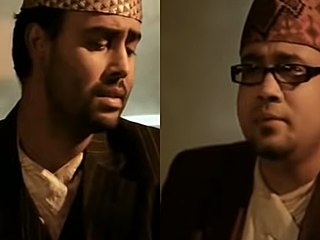
Satya Raj Acharya and Swaroop Raj Acharya are Nepali singers, songwriters, and composers. They are also biological brothers. Satya is the elder and Swaroop is the younger. They often perform together, for which reason they are credited together by their first names. They are the sons of renowned singer, Bhakta Raj Acharya.
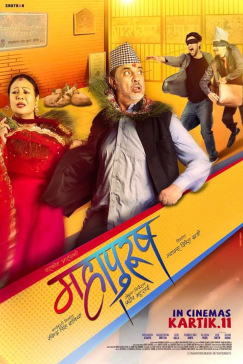
Mahapurush is a 2022 Nepali comedy drama film written and directed by Pradip Bhattarai. The film stars Maha Jodi, along with Gauri Malla, Rabindra Singh Baniya, Rajaram Paudel, Arun Chhetri, and Anjana Baraili. The film is about a widowed father of two sons finds love at an old age and struggles as a society and his own sons disapprove of it. It was released on 28 October 2022, simultaneously in Nepal, United States, Australia, United Kingdom, Japan, South Korea, and the Middle East countries.
Chakra Bam is a singer and model from the Kailali district of Nepal. He sing lok pop, lok dohori, and modern generation music. The majority of the songs he sings belong to the Deuda genre. He was born in 1993 AD.

Saroj Praja is an Nepali actor and dancer known for his work in the Nepali dance and music industries. He is the winner of Rio Chhamchhami Season 3 and Dancing with the Stars Nepal. He featured in the music video Kura Katne Manchela Katun.
Sudhir Shrestha is a Nepalese actor and model. He was born on 3 May in the Myagdi District of Nepal. He is known for the Nepali music video "Naboli Naboli".



















